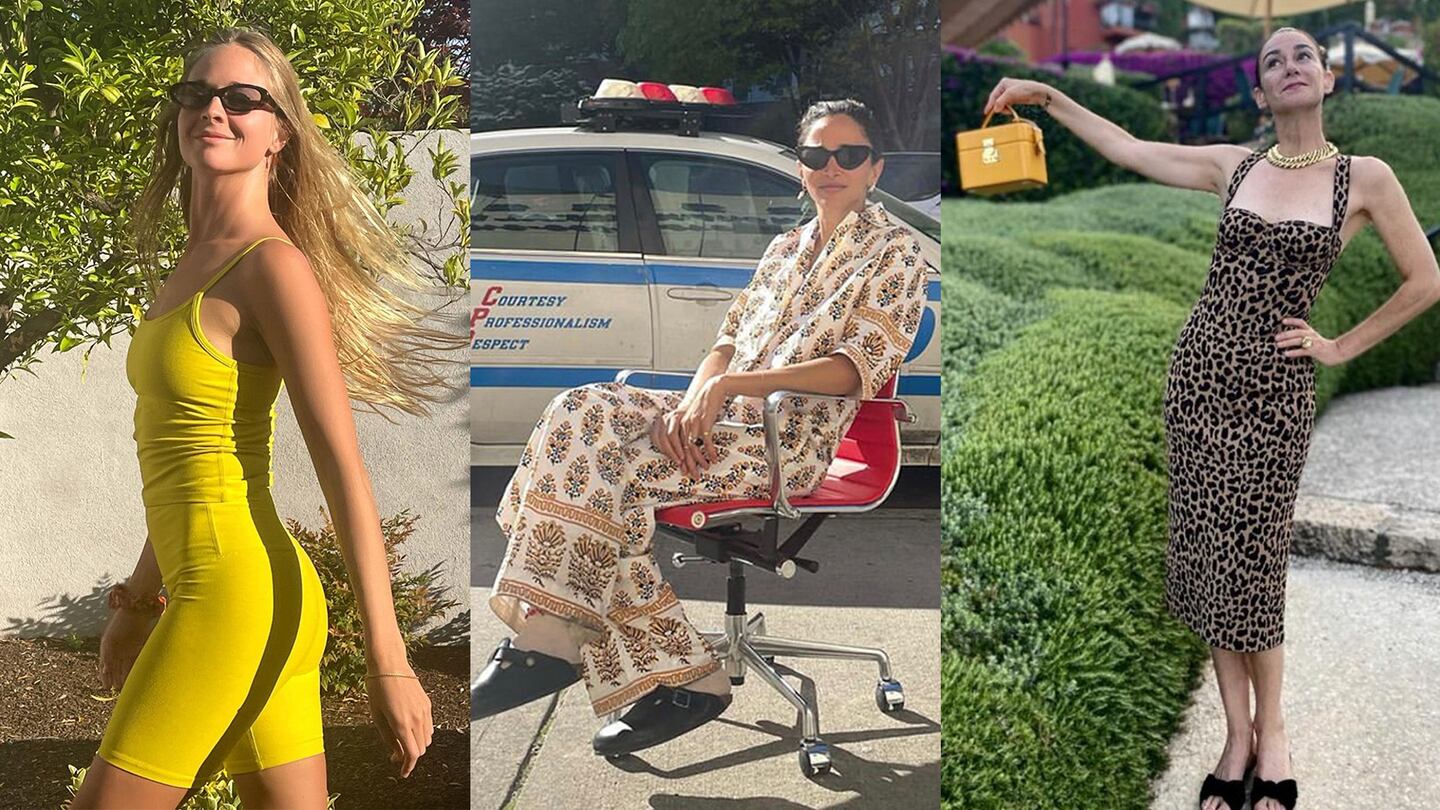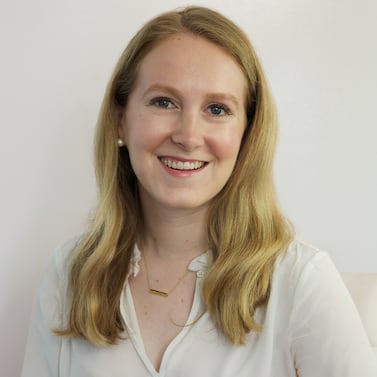
The Business of Fashion
Agenda-setting intelligence, analysis and advice for the global fashion community.

Agenda-setting intelligence, analysis and advice for the global fashion community.

The secret to gaining influence on social media in 2022? Earning it elsewhere first.
Yoga instructors Krissy Jones and Chloe Kernaghan, co-founders of New York-based Sky Ting, have won a following both online and off for their unique practise — a blend of Katonah and Vinyasa styles, along with meditation — that has attracted the Dimes Square crowd since the studio opened in Chinatown in 2015. But there are plenty of people who have never attended a class who love to follow Jones and Kernaghan on Instagram, where they post stories of retreats in Marfa, Texas and grand European vacations.
Both entrepreneurs have used that interest to make money beyond their yoga business. Jones, who has 20,000 followers on Instagram, has become a popular influencer with fashion brands, most recently nabbing partnerships with Beyond Yoga, J.Crew and Miu Miu. Kernaghan, who has just over 12,000 followers, has worked with the likes of Free People and Tory Burch.
Jones and Kernaghan may not have a follower count hundreds of thousands deep, but they’re part of a growing class of influencers that’s evaluated more on their accomplishments off of Instagram than they are the breadth of their online reach.
ADVERTISEMENT
Over the last decade, online creators have shaped their everyday lives — from getting dressed in the morning to having dinner with friends — into content that they could sell to advertisers. These days, however, there’s increasing demand for a different type of influencer, who retain their 9-to-5 jobs, even when their follower counts indicate they could be earning a good living off social media alone. Examples include Shiona Turini, a costume designer and stylist with 335,000 Instagram followers, chef and entrepreneur Laila Gohar, who counts over 234,000 followers and Italian hotelier Marie-Louise Scio, who has 67,000 followers.
These are not people who would list “influencer” as their occupation. And yet, because the content they create often feels less manufactured, they tend to be more engaged with their followers — a more powerful partner for brands looking to target very specific customer segments. They can be a refreshing alternative in a market crowded with cookie-cutter creators who increasingly tailor their content to feed the algorithm.
“I don’t think influencers are going anywhere, but you have to acknowledge that there might be a little bit of ongoing influencer backlash,” said Max Stein, founder and CEO of talent management company Brigade. “These people float above that.”
However, launching a successful campaign with a creator who has a day job requires brands to adopt a different approach.
Because these influencers often have an expertise in something unique — like James Whiteside, a principal dancer for the American Ballet Theatre, who posts behind-the-scenes looks at ballet classes and rehearsals alongside candid glimpses of his everyday life — their content is often more than just outfit posts.
That expertise is particularly important in working with brands within their respective industry, said Alessandro Bogliari, chief executive and co-founder of agency The Influencer Marketing Factory. For instance, Gohar’s recent collaboration with the homeware brand Hay — set to launch this fall — takes her talent for otherworldly tablescapes and commercialises it into a collection of accessible objects, like vases and aprons.
It’s not just about unique talent — it’s about the sort of network these influencers have developed by achieving success online. They typically run in well-connected circles, which means many of their followers are influencers themselves, an audience that can amplify a brand’s paid content.
“They have amazing networks of people,” said Stein. “There’s that whole offline component that I don’t know that you get from a regular influencer.”
ADVERTISEMENT
Despite their connections and position of prestige, in many ways, these influencers also bring a relatability to their content that full-time influencers do not. Eva Chen, Instagram’s head of fashion partnerships and one of the earliest day-job influencers, does just that on the platform, where she discusses caring for her three children alongside snaps from fashion weeks around the globe.
“At the end of the day, someone who is a mother of two working a nine-to-five is much more relatable than someone who is influencing full time and has never worked a full-time job,” said Christina Jones, SVP of talent at influencer management company DBA.
Because this isn’t typically their primary source of income, day-job influencers tend to be pickier when it comes to brand deals, as they’re not relying on them to pay the bills. They tend to partner with fewer brands, and charge more.
“It’s not just that you have to pay a little more, you have to be prepared to pay a lot more,” said James Nord, founder of influencer marketing platform Fohr. “You’re getting so much of the prestige. What their audience size is, that isn’t as important as who they are.”
The payoff is that the paid content tends to feel more authentic. For stylist Beverly Nguyen — whose chic cookery pop-up, Beverly’s, gained her notoriety outside of fashion — sponsored posts from brands like Audi and Resy are relatively rare, but are presented in the same casual, candid style as the rest of her feed.
A challenge may come in the execution. Because these influencers aren’t influencers first, that means that they likely have less experience in creating sponsored content for social media.
“If they haven’t done a lot of this work before, they might need a little bit more coaching in how to create branded content because it’s not what they’re doing every day,” said Nord.
However, brands can also ask them to provide more than just a feed post. Jayne Goheen, a stylist and consultant with over 63,000 followers on Instagram, says that nowadays, her partnerships with brands include more behind-the-scenes strategy work, rather than just a one-off Instagram post.
ADVERTISEMENT
“When I work with brands, it’s generally to provide a service for them that isn’t just taking a photo of myself,” she said. “It’s more if they want me to style or shoot something or more, preferably, a long-term consultancy.”
It’s likely that day-job influencers will rise in number as more people feel like they need to establish a personal brand and market themselves to potential employers — whether they intend to become an influencer or not.
“No matter what your job is, having a following on the internet is beneficial to your career,” said Nord.
 Opens in new window
Opens in new windowInfluencers helped turn Nordstrom’s annual Anniversary Sale into a major moment for the department store. This year, the retailer is leaning less on social media marketing, and some creators say they’re downplaying what was once their biggest moneymaker.
The social network has dramatically opened up access the feature, which lets users buy items without leaving the platform.
As the cost of advertising on Instagram rises, a growing number of direct-to-consumer brands are relying on their own customers to get the word out.

Diana Pearl is News and Features Editor at The Business of Fashion. She is based in New York and drives BoF’s marketing and media coverage.
Often left out of the picture in a youth-obsessed industry, selling to Gen-X and Baby Boomer shoppers is more important than ever as their economic power grows.
This month, BoF Careers provides essential sector insights to help PR & communications professionals decode fashion’s creative landscape.
The brand’s scaled-back Revolve Festival points to a new direction in its signature influencer marketing approach.
Brands selling synthetic stones should make their provenance clear in marketing, according to the UK’s Advertising Standards Authority.